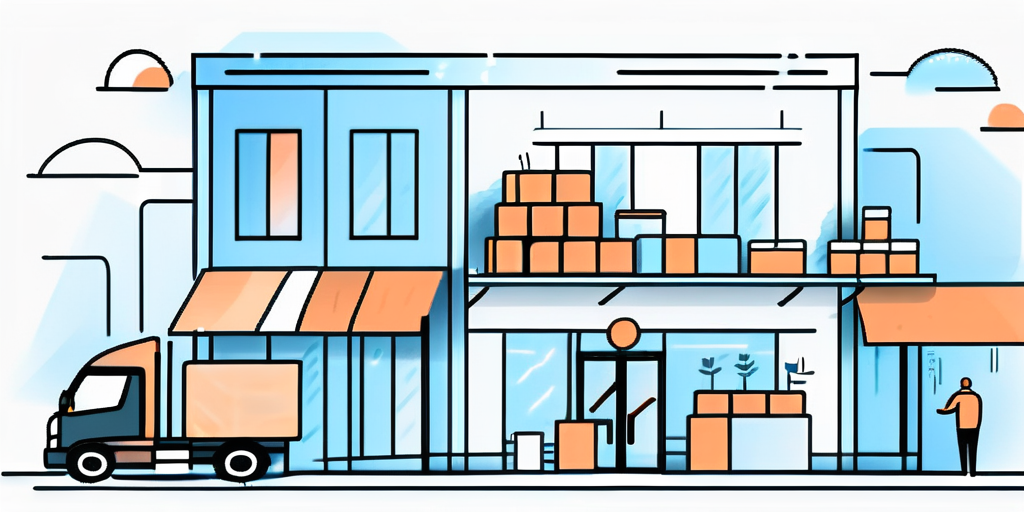Dropshipping has become an increasingly popular business model in the world of e-commerce. It offers entrepreneurs a convenient way to start their own online store without having to worry about inventory management or order fulfillment. But what about the income potential? In this comprehensive analysis, we will delve into the average dropshipping income and explore the various factors that influence it.
Understanding Dropshipping
Before we dive into the financial aspects, let’s first establish a clear understanding of what dropshipping really is. At its core, dropshipping is a retail fulfillment method where store owners don’t keep the products they sell in stock. Instead, when a store owner sells a product, they simply purchase the item from a third party and have it shipped directly to the customer. This eliminates the need for inventory management and reduces upfront costs.

The Basics of Dropshipping
One of the key advantages of dropshipping is that it allows entrepreneurs to start their business with minimal risk. Unlike traditional retail models, dropshipping doesn’t require a significant investment in inventory. Instead, store owners can focus on building an online presence and marketing their products to potential customers.
The Role of Dropshipping in E-commerce
Dropshipping has played a pivotal role in the growth of e-commerce. It has enabled individuals with limited resources and technical expertise to enter the online retail space and compete with established players. The ease of setting up a dropshipping business has opened up opportunities for aspiring entrepreneurs and has contributed to the overall growth of the e-commerce industry.
Furthermore, dropshipping has revolutionized the way products are sourced and delivered to customers. In the past, retailers had to invest heavily in warehousing and logistics to ensure their products were readily available for purchase. With dropshipping, however, store owners can tap into a vast network of suppliers who handle the storage and shipping of products. This not only saves time and money but also allows for a wider range of products to be offered to customers.
Another important aspect of dropshipping is the flexibility it offers to store owners. Since they don’t have to worry about managing inventory, they can easily test different product lines and adjust their offerings based on customer demand. This agility allows dropshipping businesses to stay ahead of market trends and quickly adapt to changing consumer preferences.
The Financial Aspects of Dropshipping
While dropshipping offers numerous advantages, it’s important to understand the financial aspects before diving in. Let’s explore the initial costs of setting up a dropshipping business and the ongoing expenses involved.

Initial Costs of Setting Up a Dropshipping Business
Setting up a dropshipping business requires some initial investment. You’ll need to invest in building a professional-looking website, establishing your brand, and marketing your products. Building a website that not only looks appealing but also functions smoothly is crucial for attracting and retaining customers. This may involve hiring a web designer or using a website builder platform that offers customizable templates.
In addition to website development, establishing your brand is another important aspect of setting up a successful dropshipping business. This includes creating a unique logo, designing eye-catching packaging, and developing a compelling brand story that resonates with your target audience. Investing in professional graphic design services can help you create a cohesive and visually appealing brand identity.
Furthermore, before launching your dropshipping business, it’s essential to conduct thorough product research and invest in product samples. This will ensure that you are selling high-quality items that meet the expectations of your customers. By testing the products yourself, you can confidently market and sell them, building trust with your customers and increasing the likelihood of repeat purchases.
Ongoing Expenses in Dropshipping
Once your dropshipping business is up and running, you’ll need to consider ongoing expenses. These may include website hosting fees, subscription costs for e-commerce platforms, marketing expenses, and customer support services.
Website hosting fees are necessary to keep your online store accessible to customers at all times. Depending on the size of your business and the amount of traffic you receive, these fees can vary. It’s important to choose a reliable hosting provider that offers good uptime and customer support to ensure a smooth shopping experience for your customers.
In addition to hosting fees, subscription costs for e-commerce platforms such as Shopify or WooCommerce are common in dropshipping. These platforms provide essential features for managing your online store, including inventory management, order processing, and payment gateways. While these costs may seem like an additional expense, they offer convenience and efficiency that can save you time and effort in the long run.
Marketing expenses are another ongoing cost in dropshipping. Promoting your products through various channels, such as social media advertising, influencer collaborations, or search engine optimization, can help drive traffic to your website and increase sales. Allocating a budget for marketing activities is crucial to reach a wider audience and stay competitive in the ever-growing e-commerce landscape.
Lastly, providing excellent customer support is essential for maintaining a positive reputation and ensuring customer satisfaction. This may involve hiring customer service representatives or investing in software that automates support processes. By promptly addressing customer inquiries and resolving any issues, you can build trust and loyalty, leading to repeat business and positive word-of-mouth recommendations.
By considering these initial costs and ongoing expenses, you can make informed decisions and develop a comprehensive financial plan for your dropshipping business. While there are financial aspects to consider, with careful planning and execution, dropshipping can be a profitable venture.
Calculating Average Dropshipping Income
Now, let’s delve deeper into the fascinating world of calculating the average dropshipping income. While it may seem like a straightforward task, there are several factors that come into play, each with its own intricacies and nuances. By carefully considering each of these factors, you can obtain a more realistic estimate of your potential income.

Factors Influencing Dropshipping Income
When it comes to dropshipping income, numerous factors can significantly impact the figures you see. Your niche, for instance, plays a pivotal role in determining the level of demand and competition you’ll face. A niche with a high demand and low competition can potentially lead to higher income, while a saturated market may pose challenges.
Product selection is another critical factor to consider. Choosing products that are in high demand, have a healthy profit margin, and align with your target audience’s preferences can greatly enhance your income potential. Additionally, your pricing strategy can make or break your dropshipping business. Striking the right balance between competitive prices and maintaining a healthy profit margin is essential for sustainable success.
Marketing efforts are also instrumental in determining your dropshipping income. Effective marketing campaigns that reach your target audience and generate a steady stream of traffic to your online store can significantly boost your sales and income. Furthermore, providing exceptional customer service is crucial for building a loyal customer base, which can lead to repeat purchases and positive word-of-mouth referrals.
The Process of Calculating Average Income
Now, let’s explore the process of calculating your average dropshipping income in more detail. To get an accurate representation of your earnings, you’ll need to meticulously track your revenue and subtract your expenses. This will give you a clear picture of your net profit, allowing you to assess the true financial health of your dropshipping venture.
However, it’s important to note that dropshipping income can be subject to fluctuations. Market trends, seasonal variations, and unforeseen circumstances can all impact your earnings. Therefore, it’s crucial to maintain a vigilant eye on your financials, consistently tracking and analyzing your income and expenses. By doing so, you can identify trends, make informed decisions, and adapt your strategies accordingly to ensure long-term success.
The Reality of Dropshipping Income
While dropshipping has the potential to generate a high income, it’s important to be aware of the realities and challenges that come with it.
The Potential for High Earnings
Dropshipping can be a lucrative business if done right. With the ability to scale quickly and reach a global audience, there is significant potential for high earnings. Successful dropshippers have been able to generate six-figure incomes and beyond.
The Risks and Challenges
However, it’s important to acknowledge the risks and challenges that come with dropshipping. Competition is fierce, and finding the right products, marketing strategies, and suppliers can be a daunting task. Additionally, customer service and fulfillment issues can arise, impacting your reputation and sales.
Strategies to Increase Dropshipping Income
To maximize your dropshipping income, consider implementing the following strategies.
Choosing the Right Products
Product selection is key to your success in dropshipping. Conduct thorough market research to identify products with high demand and low competition. Focus on niche markets and unique products that will appeal to your target audience.
Effective Marketing Techniques
Invest time and resources in developing effective marketing techniques to promote your products and drive traffic to your online store. Utilize social media marketing, search engine optimization, email marketing, and influencer partnerships to increase your visibility and attract potential customers.
In conclusion, while dropshipping can offer a convenient and low-risk way to start an online business, the average dropshipping income depends on several factors. Understanding the basics of dropshipping, calculating your expenses, and implementing effective strategies can significantly impact your income potential. Remember, dropshipping is not a get-rich-quick scheme, but with dedication and perseverance, it can lead to a lucrative and rewarding income stream.

